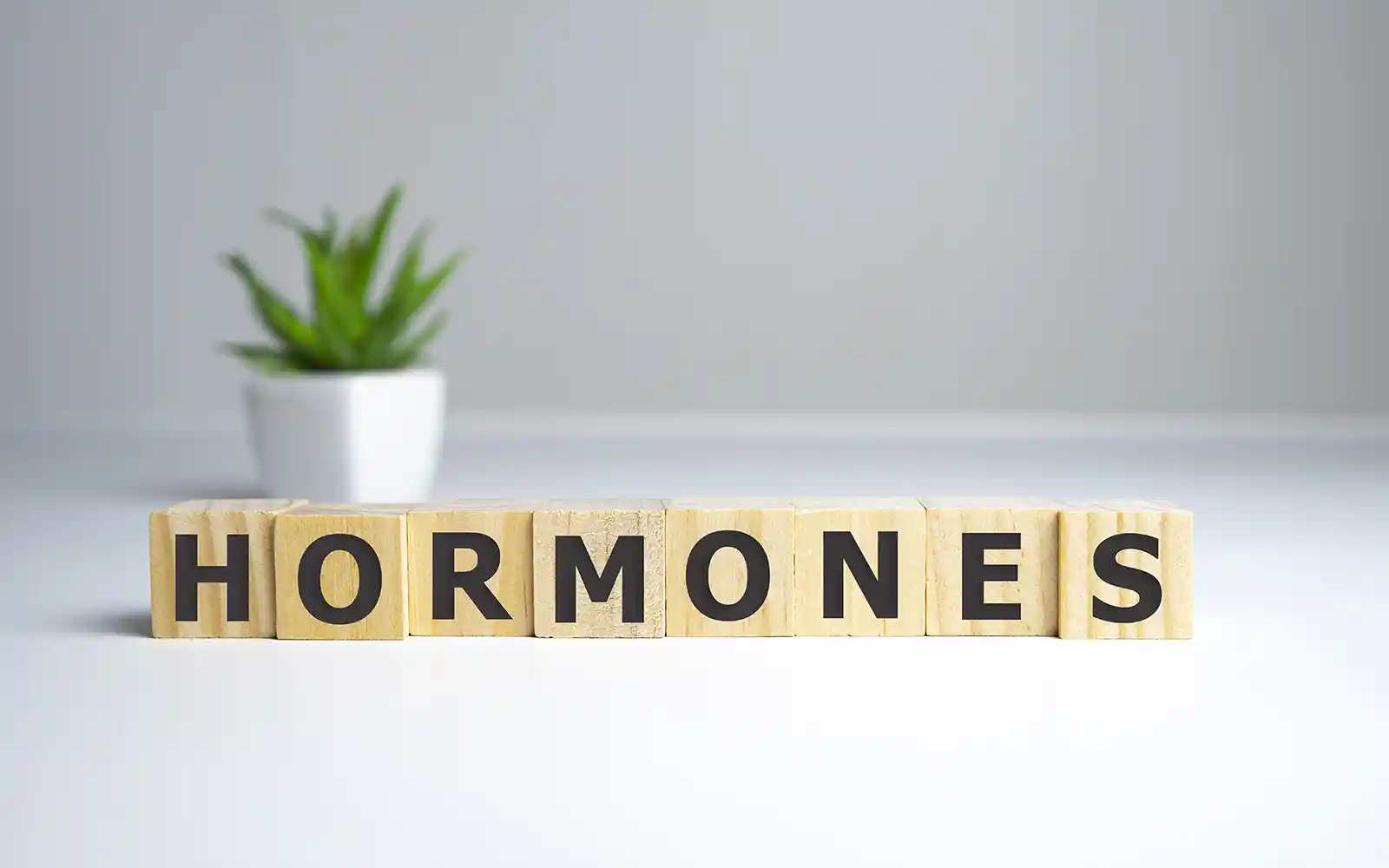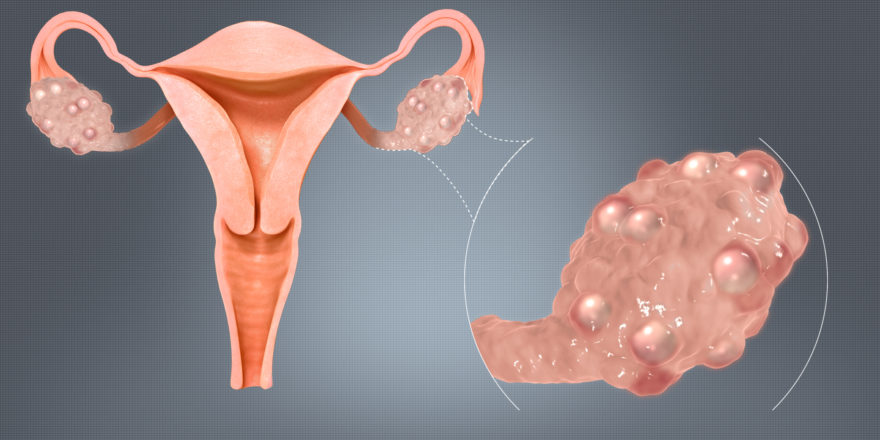Polycystic ovary syndrome causes a range of symptoms because of abnormal hormone levels, including changes to menstrual cycle patterns and an increased risk of other health conditions.
Hormones
The crucial feature of PCOS is elevated androgens (male hormones), particularly testosterone. However, other hormones are involved in the condition, and their levels matter too.
- Testosterone is high (over 2.4 nmol/l) in 60-80% of women with PCOS
- DHEAS is high in about 25% of PCOS women
- High luteinizing hormone (LH) levels
- An abnormal ratio between LH and follicle-stimulating hormone (FSH), which is usually 1:1, can become 2:1 or higher
- High 17-ketosteroid levels
- Progesterone levels below 30 nmol/l seven days after ovulation was predicted indicates no egg was released
- High levels of AMH are due to many larger follicles
- High estrogen levels
- Elevated leptin levels due to excess fat cells
Cycles
Women with PCOS experience long cycles (oligomenorrhea), a lack of periods (amenorrhea), or they don’t ovulate (anovulation).
Prolonged or erratic menstrual bleeding may still occur due to a spontaneous breakdown of the functional lining of the womb, but this is unconnected to the degeneration of the corpus luteum, which is part of healthy cycles and causes normal periods.
Women should have roughly 28-day cycles and ovulate around 13 times a year. PCOS typically causes much longer cycles, and cycles over 35 days are considered abnormal, at which point the chances of pregnancy fall significantly.
Ovaries
Women with PCOS have more (2-3x) of the larger follicles in their ovaries that change the shape and size in their ovaries and typically:
- Ovaries are about 2x the usual size
- Ultrasound shows an echogenic centre
- Ultrasound also shows many 2-8mm follicles around the outside of ovaries like “a string of pearls”
Physical changes
Elevated testosterone has a physical impact on a woman’s body, which vary with ethnic group, but they typically experience:
- Weight gain, especially around the waist
- Fatigue and low energy
- Increased body hair on the chest, belly, face, toes and around the nipples. This affects about 70% of women with PCOS
- A reduction in breast size and growth of the clitoris
- Hair loss and thinning of scalp hair
- Persistent acne and dark patches of skin, especially around the groin, neck, breasts and armpits
- Sleep disturbance
- Mood changes, especially depression and anxiety
- Pelvic pain alongside heavy bleeding and headaches
Associated health conditions
PCOS is caused by a variety of factors, and it’s associated with a range of other health conditions that also have hormonal and physical abnormalities:
- Insulin resistance and type II diabetes (50–80% of women with PCOS have insulin resistance)
- High blood pressure (hypertension)
- High levels of LDL (bad) cholesterol and lower HDL (good) cholesterol levels
- Weight gain and obesity
- Depression and low mood
- Higher levels of oxidative stress and lower antioxidant levels
- Systemic low-grade inflammation
- Cardiac disease
- Metabolic syndrome




